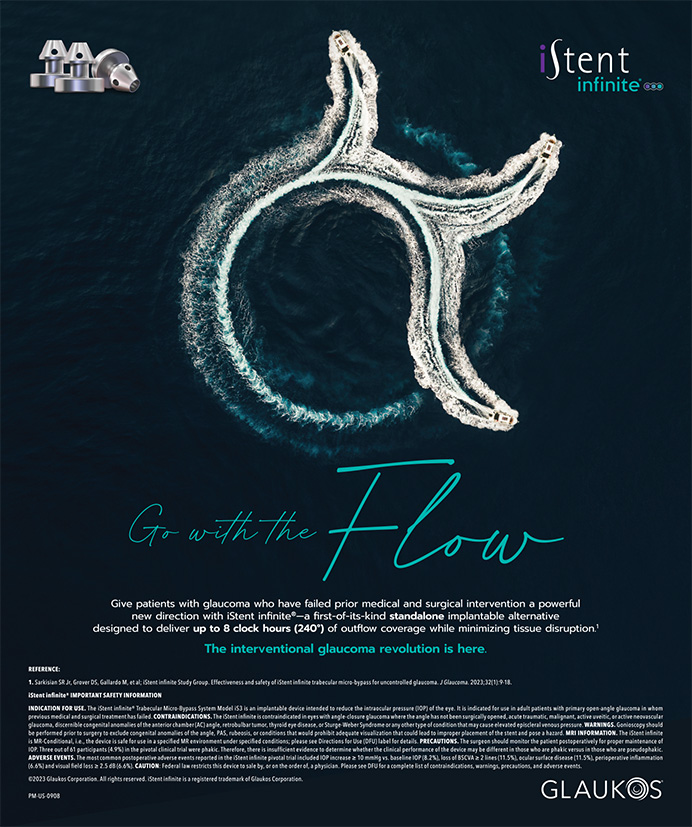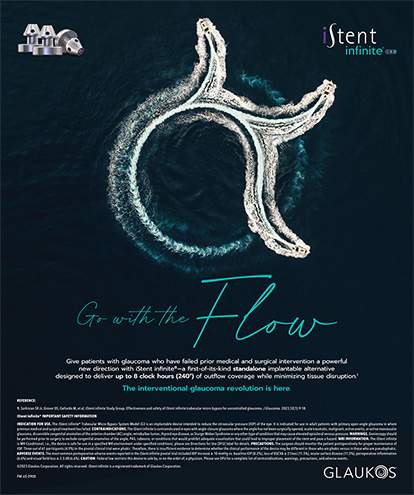When David F. Chang, MD, asked me to write about my most difficult case ever, my mental Rolodex flipped past all of the monocular patients with pseudoexfoliation, small eyes, megalophthalmos, intraoperative choroidal hemorrhage, and zonulopathy. It even passed by the one-eyed patient who, during the middle of phacoemulsification, broke out into a loud, trance-like, head-shaking prayer beseeching the Lord to save her. One case, however, sticks out indelibly in my mind. Although not the most technically challenging, it was the most humbling and heart wrenching, and it remains my most difficult case.
BACKGROUND
It was 1993, and I had just started my second year in private practice. Having gotten past the difficult “first year out of training” insecurities and adjustments, I was feeling pretty confident in my surgical skills. Mr. Smith, a sweet 80-year-old man, was brought to me by his wellmeaning family. He had lost vision in his left eye due to a retinal detachment that occurred after a complicated extracapsular cataract surgery, and he was losing sight in his right eye. He was hesitant to be examined but humored me in my efforts as a favor to his family, who apparently were having more difficulty dealing with his fading sight than he was.
Mr. Smith had a visual acuity of count fingers in his right eye due to a brunescent cataract. Although my view of the back of the eye was limited, I felt he had an excellent chance to improve his sight with cataract surgery. Mr. Smith's family was thrilled when I relayed this news, but he waved me off, stating that he was not interested in surgery. I implored him to reconsider. He shared with me that his previous surgeon told him never to have cataract surgery on his other eye, because problems would occur. After a long discussion about the safety and benefits of modern phacoemulsification versus extracapsular cataract extraction, I convinced him to move forward with cataract surgery.
SURGICAL COURSE
At this point in my career, I had just started using a horizontal chopping technique and was transitioning to topical anesthesia. I chose to create a scleral tunnel incision for the implantation of a 5.5-mm PMMA IOL that I used routinely through a sutureless frown incision. For most of my cases, I was generally creating clear corneal incisions for silicone IOLs, but I chose a PMMA IOL in this case because of Mr. Smith's history of a retinal detachment in the other eye. In 1993, these were the only available lens options.
The capsulorhexis went smoothly. I started phacoemulsification with a vertical chopping technique. I quickly noticed a lack of support for the rock hard, brunescent lens, which was starting to tilt and sink. I decided to exit the eye and instill a dispersive viscoelastic under the lens for support, as it was clear to me that the posterior capsule was not intact. Next, I carefully performed phacoemulsification in the anterior chamber using a nibbling technique with low vacuum and low flow. I constantly replaced the viscoelastic while attempting to keep the lens in one piece so as not to lose any fragments in the posterior segment through the opening in the capsule. I successfully completed this portion of the surgery without losing any lenticular fragments, and I did not encounter any vitreous until I was halfway through the cortical cleanup. At that point, I performed a bimanual clear corneal vitrectomy and placed a 7-mm optic, three-piece PMMA IOL in the sulcus, closed the incision with three sutures, applied acetylcholine (Miochol-E; Bausch + Lomb), and used a light pipe to look for vitreous strands, which were not present. I felt pretty good about having avoided a potential disaster.
DISASTER REVEALED
Around the time Mr. Smith first came to see me, I had started videotaping most of my surgeries. On the evening after his surgery, I reviewed what had taken place in the OR. The video revealed that the posterior capsule had blown out during hydrodissection (Figure). An air bubble had moved behind the posterior capsule during the fluid wave of hydrodissection. I had never seen or heard of this phenomenon. The combination of a rock- hard cataract in a long myopic eye with vitreous degeneration and a fragile capsule—the anatomical situation in Mr. Smith's eye—was the perfect setup for a complication of this sort.
OUTCOME
When I saw Mr. Smith the next day, his visual acuity had improved to 20/60 with moderate cornea edema. He was ecstatic with the outcome of his procedure. I assured him that the best was yet to come, as his visual acuity was certain to improve in the next few days.
Instead, I received a call on the second postoperative day that Mr. Smith's vision had dropped precipitously and that he felt severe pain in his operative eye. I arranged for him to come to the office immediately. His visual acuity was reduced to hand motions, and he had a hypopyon. Mr. Smith was seen by a retinal specialist colleague and underwent surgery within a few hours. Sadly, he had gram-negative endophthalmitis, and vision was lost. He ended up with no light perception.
As a result, Mr. Smith was placed in an assisted living facility, where he developed severe depression and died a few months later.
LESSONS LEARNED
Mr. Smith's family members remain my patients to this day. They were never angry with me. Nor did they blame me for what happened. If anything, they blamed themselves for talking Mr. Smith into having surgery. Their extreme generosity and understanding have only exacerbated my feelings of remorse and guilt at having injured the patriarch of their family.
Before this case, I had considered hydrodissection to be a benign maneuver. This painful lesson taught me to approach hydrodissection gingerly in certain patients. Later, I came to understand that polar cataracts and white posterior capsular plaques after vitreoretinal surgery can also blow out with hydrodissection. I made a mental note never again to be as aggressive with hydrodissection in highly myopic eyes with dense cataracts.
Throughout the years, I have often thought about the discussion I had with Mr. Smith prior to surgery, when I convinced him to allow me operate on him; the memory still makes me cringe. This case taught me about the possibility of a capsular blowout during hydrodissection, and for that, I am a better surgeon. More importantly, however, it taught me the need for humility and respect for all the things over which I do not have complete control. When one has the repeated opportunity to help people regain the miracle of sight, it is easy to forget that it is also possible to leave people worse off than they already are, no matter how facile or skillful one is at dodging bullets thrown one's way. This was and remains the most difficult and painful lesson I have ever learned from performing cataract surgery.
The case described herein was presented during a Video Journal of Ophthalmology series I recorded in 1996 called, “Nightmare Cases From Hell.” The original video episode was titled, “Capsular Blowout During Hydrodissection,” and was released in April 1997. It is available on Eyetube.net.
Section Editor David F. Chang, MD, is a clinical professor at the University of California, San Francisco, and is in private practice in Los Altos, California. Dr. Chang may be reached at (650) 948-9123; dceye@earthlink.net.
Steven G. Safran, MD, is in private practice in Lawrenceville, New Jersey. He acknowledged no financial interest in the product or company mentioned herein. Dr. Safran may be reached at (609) 896- 3931; safran12@comcast.net.


